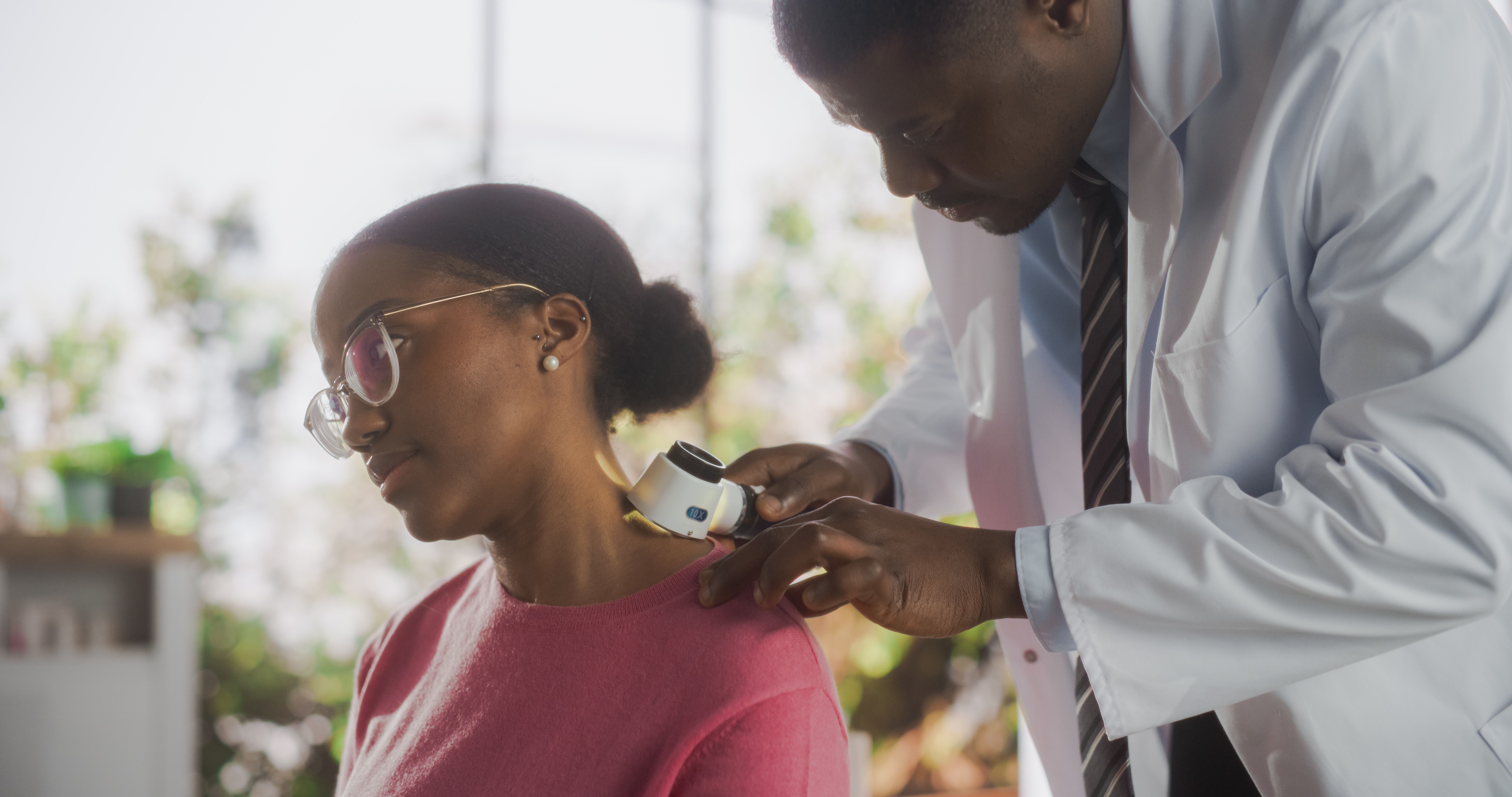News
Article
Clinical Data Lacking on Black Patients With Melanoma
Author(s):
A single-institution, retrospective cohort study evaluates knowledge gaps in clinical data on Black patients with melanoma.
A study recently published in JAMA Dermatology highlighted the clinically under-documented characteristics of Black patients with melanoma, including genetics, familial and personal cancer histories, anatomic sites, and immune statuses.
Dermatoscope Exam on Black Patient | image credit: Gorodenkoff - stock.adobe.com

Melanoma occurs in 1 out of 100,000 Black patients per year. This patient population also experiences worse survival outcomes compared with White patients, the authors noted. Data kept on Black patients with melanoma is lacking a plethora of details, such as information on disease progression, sequence variations, treatments, and more. These insufficient records contribute to considerable gaps in knowledge regarding Black patients with melanoma, therefore, researchers designed a study to identify the features of melanoma and melanoma-related mortality in this population.
Data were retrospectively gathered from the hospitals associated with the University of Texas Southwestern Medical Center (UTSW) between January 2006 and October 2022. In total, 48 Black patients with melanoma were identified. Information regarding patients’ sex, age, family and personal medical history, location of their primary, medications, clinical/pathological stages, melanoma histologic subtype, melanoma treatments and treatment responses, genetic/molecular testing, imaging reports, survival, and cause of death.
Patients had a median age of 62 years at diagnosis. The 48 identified patients constituted 1% (48/4732) of patients with melanoma at UTSW. These patients largely received initial diagnosis of local stage 0, I, or II disease (n = 29, 60%). Eleven patients (23%) were diagnosed with regional stage III disease, 4 (8%) had diagnoses of distant stage IV disease. Overall, the melanoma in 27% of these patients (n = 13) progressed to stage IV. Twelve patients in the cohort ended up dying from melanoma.
Most of the melanoma cases were cutaneous (n = 40, 83%), while the remaining cases were mucosal, ocular, or a melanoma of unknown primary (n = 8, 17%). Thirty cases (63%) occurred in the feet or hands (acral sites), all of which were cutaneous forms of melanoma.
There were 6 patients (13%) who were immunosuppressed—all of whom had cutaneous melanoma. In this group, immunosuppression was more likely for patients with melanoma in nonacral sites (4/10, 40%) compared with acral sites (2/30, 7%). Additionally, patients with nonacral melanomas were more likely to have a personal history of cancer (6/10 [60%] vs 5/30 [17%].
Five-year survival outcomes were the most favorable in nonacral cutaneous melanoma cases (100%) compared with acral cutaneous (785) and mucosal or ocular (40%), as well as cases of melanoma of unknown primary (0%).
“Although sequencing data in this cohort was limited, genetic predisposition (germline or somatic) may contribute to melanoma development in Black patients. In addition to 2 patients with potential germline MSH6 and BRCA2 variants, all 3 Black patients with [superficial spreading melanomas] had history of other cancers,” Wix et al wrote. “More germline and somatic genetic testing is needed in Black patients with melanoma to better understand at-risk groups.”
Reference
Wix SN, Brown AB, Heberton M, Adamson AS, Gill JG. Clinical features and outcomes of black patients with melanoma. JAMA Dermatol. 2024 Jan 24:e235789. doi: 10.1001/jamadermatol.2023.5789




